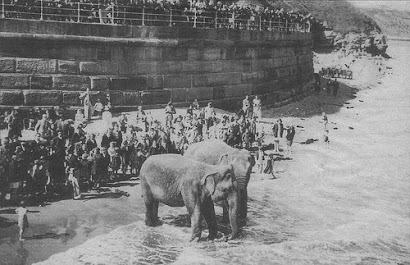 The colourful life of Duleep Singh reads like a pulp romantic tragedy. The Maharajah of Lahore was born into fabulous wealth in 1838 when Britain was involved in a fierce struggle for Punjab.
The colourful life of Duleep Singh reads like a pulp romantic tragedy. The Maharajah of Lahore was born into fabulous wealth in 1838 when Britain was involved in a fierce struggle for Punjab.In 1849 his mother was imprisoned, Punjab was annexed by Britain and the 11 year old Maharajah was deposed.
He came to England in 1854 and became a great favourite of Queen Victoria. He lived through his teens and into his twenties in Scotland, where he was known as 'The Black Prince of Perthshire'. He enjoyed game shooting and became well known for hosting lavish receptions and entertainments.
In 1860 he returned to India to rescue his mother from political exile in Nepal. Four years later, after the pair had become regulars on the society scene, she suddenly died. He returned to India to cremate her and arrived back in England with Bamba Muller, a girl from a Cairo mission school who became his wife.
 They lived in Elveden, Surrey. Duleep Singh transformed the run-down estate into a modern, thriving game preserve. The house became a semi-oriental palace with huge paintings, grand sculptures and cases of jewels reminding visitors of his former status.
They lived in Elveden, Surrey. Duleep Singh transformed the run-down estate into a modern, thriving game preserve. The house became a semi-oriental palace with huge paintings, grand sculptures and cases of jewels reminding visitors of his former status.Even so he became dissolute, took mistresses, fathered illegitimate children and used up his generous allowance forcing him to beg for more from the Queen. With a sense of burning injustice, he returned to India in 1886 to place himself as the lawful sovereign of the Sikh people. Unfortunately he was arrested at Aden and returned to Europe.
After a miserable few years in Moscow he came to beg official pardon from the Queen. Duleep Singh was now a broken man. In 1893 the Maharajah of Lahore, who placed the fabled Koh-I-Noor diamond in the hand of Queen Victoria, died of an epileptic fit in a lonely hotel room in Paris, penniless and shattered.
THE MAHARAJAH OF MULGRAVE
For four years, between 1859 and 1853, the Maharajah rented Mulgrave Castle from the Marquis of Normanby who was then the British Ambassador in Florence. He was often seen hawking on the moors in full Indian regalia accompanied by English gamekeepers in scarlet uniforms.
The Maharajah had a road between Sandsend and Whitby constructed following in part the line of the current route. It considerably shortened the distance by road between Mulgrave Castle and Whitby. Indeed the toll booth still remains, and tolls were being collected until 1925.
Unfortunately the legend that Duleep Singh had the road built because his elephants objected to walking along the beach cannot be verified. There is no evidence that elephants ever resided at Mulgrave.
Indeed there is no evidence that elephants don't like sand between their toes, as this photograph clearly shows. Probably taken in the early 1900s, after the death of Duleep Singh, these two seem quite happy on the sands below the battery. They were probably from a visiting circus.











